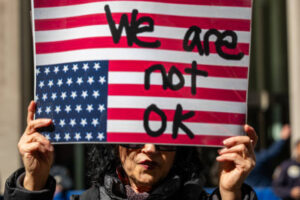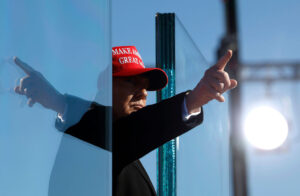- The article discusses a scandal involving new sentencing guidelines that would require judges to "normally" consider pre-sentence reports (PSRs) for ethnic minority offenders, potentially giving them an advantage in avoiding prison.
- Shabana Mahmood, the Justice Secretary, opposed the guidelines, calling them unfair, and proposed emergency legislation to block their implementation.
- The Sentencing Council defended the guidelines, claiming they were meant to ensure judges had sufficient information, not to impose leniency based on race—though the effect would still be discriminatory.
- The article highlights broader concerns about ideological activism in the justice system, including efforts by the Bar Standards Board to enforce diversity mandates on barristers.
- Data on ethnic representation in the legal profession is contested, with critics arguing that claims of systemic racism are exaggerated or misleading.
It might not induce quite the same moral nausea as the Pakistani rape gangs cover-up, but the ongoing sentencing guidelines scandal is another hard-hitting episode in a promising new series in which public disgust is suddenly and belatedly directed towards racist policies in the justice system.
This latest upset concerns pre-sentence reports and shines a light on how the system has been captured by political activism. “PSRs” are reports about a defendant written by probation officers for the assistance of the judge in a particular case. Probation officers advocate for probation. If there is any chance that a defendant might avoid prison, his lawyer will want a PSR: it’s just that little bit harder for a judge to bang someone up if he has a document in front of him arguing for a non-custodial sentence such as a Community Order, written by an expert and filled as they always are with very scientific-looking sociological analysis in support of that recommendation.
No PSR is needed, though, if a judge thinks it “unnecessary” — which generally means: if the defendant will definitely be sent to prison. Otherwise, a report must be obtained. The new guidelines, which were due to come into force this week but were temporarily suspended following a last-minute legal intervention by Robert Jenrick and are soon to be made unlawful and of no effect by Shabana Mahmood’s emergency legislation, add to the “unnecessary” exemption: “A PSR will normally be considered necessary,” the proposed instruction goes, “if the offender [is] from an ethnic minority…”
In edge cases, then, this new line will nudge judges into ordering a PSR when they otherwise wouldn’t. Then, armed with a report recommending a Community Order, the non-white offender has a significantly higher chance of avoiding custody. Of course, not all PSRs recommend non-custodial sentences. But most do. So, on average, a PSR helps you avoid prison.

When Shabana Mahmood, the Lord Chancellor and Secretary of State for Justice, complained that “access to [a PSR] should not be determined by an offender’s ethnicity”, the Chair of the Sentencing Council, Lord Justice William Davis, replied at length. The closest he came to dealing head-on with the fundamental unfairness in the effect of the new guideline — that non-white offenders would on average enjoy a race-based advantage — was something of a straw-man: “I have seen it suggested that the guideline instructs sentencers to impose a more lenient sentence on those from ethnic minorities than white offenders. Plainly that suggestion is completely wrong.” Plainly. But that is not what Mahmood, who is now proposing emergency legislation to block the implementation, nor any sensible person, is saying: there’s no instruction to impose a more lenient sentence, but a more lenient sentence will be the overall average effect if the special encouragement to order a PSR for a non-white defendant is to be heeded.
The Chair even accepted that “if access to a pre-sentence report were to be determined by membership of […] an ethnic minority background – that would not be a proper approach”. But if race-based preferential treatment is improper if it always happens, then it is improper if it “normally” happens. It is a distinction of degree, not kind. Ethnicity might not be strictly determinative, but it is a significantly influential factor.
As to the intention behind the guidance, the Chair explained, “the purpose of the list [that includes “ethnic minority”] is to remind sentencers of the kinds of cases in which it is likely that they will require more information”. But that is not what the guidance says; that purpose is not at all clear from the relevant text. And anyway, a discriminatory effect is a discriminatory effect.
More generally, the letter notes that it wasn’t the Sentencing Council’s idea, most of the consultation responses supported it, and the Lord Chancellor had not previously complained. All true, but that absolves neither the members of the Sentencing Council, who bear responsibility for its output, nor the wider political culture in which it operates. It is particularly striking that not one of its 14 members — including academics, several very senior judges, a Chief Constable of Police, and the Director of Public Prosecutions himself — thought to call out this obvious unfairness. As the Chair emphasised in defence of the measure, the Council’s vote was unanimous. But we shouldn’t be too harsh on them: you don’t get to be a member of the Sentencing Council, nor even a Court of Appeal judge, without proving your commitment to EDI.
Above all, and regardless of whether the guidelines come into force or not, the Chair’s letter gives an illuminating snapshot of how the Blob quietly turns unpopular racial activism into force-of-law policy. In this instance, the idea had its origins in a “thematic inspection report” by HM Inspectorate of Probation. The letter does not identify the specific report, but it is probably this one, which complains that “[pre-sentence] reports did not consider the impact of structural barriers on the lives of black and mixed heritage boys or explore their experiences of discrimination”. Without first-hand knowledge of the Probation Inspectorate, its Blob factor is hard to determine, but the slides that accompany the report (sample extract: “add some unity, understanding, and respect for the future, Serve with justice, And enjoy”) indicate that it’s probably on the high side.
“The Chair’s letter gives an illuminating snapshot of how The Blob quietly turns unpopular racial activism into force-of-law policy.”
The next step was for the “Probation in Courts” team to “highlight what they considered to be the importance of referring to specific cohorts when reminding sentencers of the importance of requesting pre-sentence reports”. After that, the Sentencing Council considered the Equal Treatment Bench Book, relevant passages of which include a summary of findings from David Lammy’s 2017 report on BAME outcomes in the criminal justice system, such as the significant overrepresentation of black people in prison, the (not unrelated) fact that black defendants are much more likely to plead Not Guilty, and the observation that “pre-sentence reports may be particularly important for shedding light on individuals from cultural backgrounds unfamiliar to the judge”. On this basis, then, and taking into account “all the available evidence and guidance”, the Sentencing Council decided to insert the fateful lines.
Then came the consultation process, and it was noted in the consultation report that “many individual respondents, including some magistrates, did not believe there should be a cohort list at all, mostly citing reasoning around the idea that the list is biased and conflicts with equality in sentencing”. “While responses varied,” the report continued, “with strong views both for and against the list, overall, a much higher number of respondents supported retaining the list.” But the institutional consultees tend to be, per O’Sullivan’s First Law well-disposed towards “positive” discrimination — and there are powerful disincentives for individuals working in criminal justice to cry foul. It’s hardly a fair referendum.
Another ongoing battle in this area, which gives a flavour of the climate in which lawyers now operate, is the Bar Standards Board’s efforts to replace a duty not to discriminate with a duty to “act in a way that advances equality, diversity and inclusion”. The consultation closed in November last year, and is yet to report. Last year’s Chair of the Bar, Sam Townend KC, has opposed the change because it is “likely to hinder progress” and “probably unlawful”. Former Justice Minister David Wolfson KC called it “coercive, illiberal, and dangerous”. Akua Reindorf KC said that it could put barristers “under a duty to promote an ideological position with which they disagree”.
But the Director General of the BSB, Mark Neale, was unrepentant, and sought to reassure the legal journalist Joshua Rozenberg (another critic of the change) that the consultation was “very genuine”. As opposed to what, one wonders — other consultations he has presided over?
“To say that ethnic minorities are “half as likely” to get pupillage, and just leave the inference of racism there for the taking, is at best deeply misleading.”
In fact, the proposed new duty is effectively already in force, because anyone applying to become a KC has to prove that they are taking “positive action to promote diversity…” Indeed, the assessed competency entitled “Diversity action and understanding” is given the same weight as written and oral advocacy combined. But no one much spoke up when that was brought in, and now — surprise, surprise — the BSB now prays it in aid. Relax! You’re already doing it actually! It can’t be that bad!
Shortly before the BSB announced their proposed change, the Bar Council Chair had suggested that the regulator leave EDI matters to the profession. But the BSB (statutorily separated from the Bar Council since 2007) is obliged to “encourage a diverse profession” under s.1 of the 2007 Act. Its chief, explaining why he would not do as the Bar Council Chair suggested, claimed that “students from minoritised backgrounds are half as likely to be successful with pupillage applications as equivalently qualified White counterparts”. However, in no meaningful sense is this true.
The data from which the claim is likely derived (he gives no citation) was analysed by the Bar Race Working Group, a body established by the Bar Council in the George Floyd summer of 2020. It consisted of 32 barristers, of whom around 80% are from an ethnic minority. They concluded, in their 2021 report, that “the data… categorically and definitely evidences, in quantitative and qualitative terms, that barristers from all ethnic minority backgrounds… face systemic obstacles to building and progressing a sustainable and rewarding career”.
According to the BSB’s 2021 report on diversity at the bar, the percentage of non-white barristers that year was 14.7%, while the percentage of non-white working-age people in the population as whole was… also 14.7%. That does not seem very racist. As far as pupillage is concerned (that’s a barrister’s year-or-more-long apprenticeship, hard to obtain) at least 23% of pupils were found to be from ethnic minorities in 2020, which compares with 20% ethnic minorities among the juridiction’s 25-34 year-olds (roughly the age-range of pupillage applicants). That does not seem very racist either.

So how could Neale be claiming that ethnic minorities are half as likely to get pupillage? The answer seems to lie in the fact that ethnic minorities attend Bar school and apply for pupillage in hugely disproportionate numbers: 39% of pupillage applications in 2022 were from ethnic minority applicants (actually more like 42% if the “prefer not to say” answer is evenly distributed), whereas they only account for 21% or 22% of pupillage offers.
So, although they outstrip their proportion in the population, they are not succeeding in proportion to their rate of application. Alright, but one explanation might be the large number of foreign students on the Bar training course. The status of being “called to the Bar”, even if they do not obtain pupillage, confers professional advantage in many former commonwealth countries. If, as is likely, many of these students have non-native-level English and limited connection to this jurisdiction, it is perhaps not surprising that their success rate is lower. Whether or not this is in fact the reason, you can be sure that any such alternative explanation is given no space in any of the official reports on the matter. To say that ethnic minorities are “half as likely” to get pupillage, when their proportion among pupils is higher than their proportion among their age group in the population at large, and just leave the inference of racism there for the taking, is at best deeply misleading.
But this is how it seems to go in the justice system now. Whether it’s Lammy on racist courts, or the BSB on racist barristers, data is interpreted to fit an agenda. And the resulting bad idea, in breach of an important principle, is laundered through public consultations few sane people have the time or nerve to respond to. Then, the thick end of the wedge is driven in as small victories are parlayed into bigger ones. If only we had a barrister as Prime Minister, who valued meritocracy and the independence of the Bar and judiciary, who might be able to make all this stop.







